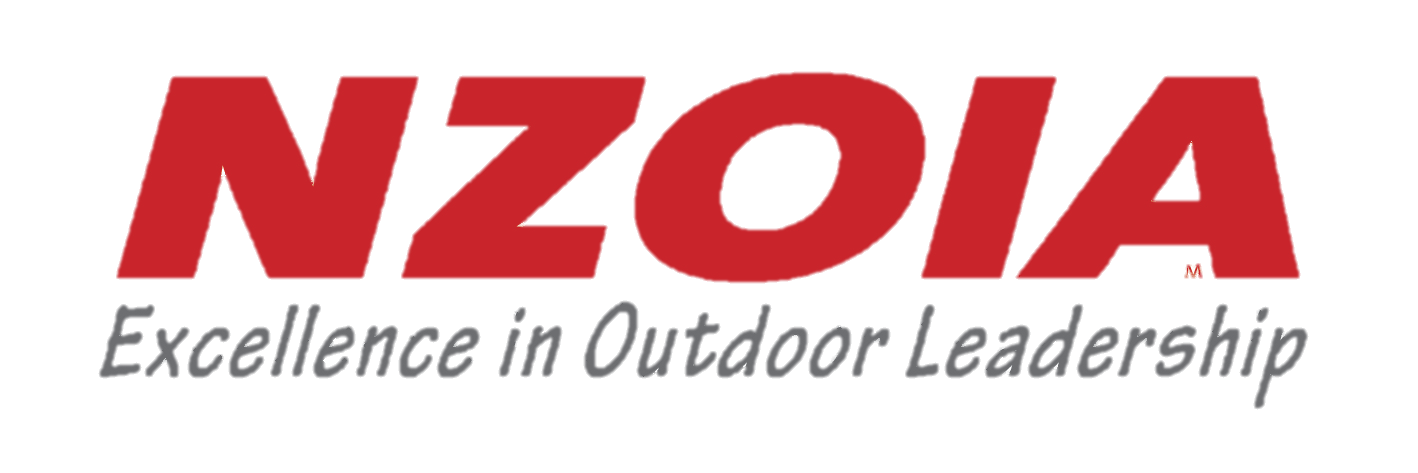Canyon
Canyon Leader
The holder of this qualification can lead and manage trips in canyons up to v2a2II. In addition the canyon leader can assist a NZOIA Canyon 1 or 2 holder in canyons up to v3a3III. Two day assessment.



Photo Credits: Top - Russell Hodgson; Centre: Toine Houtenbos; Bottom: Neil Silverwood
Course Outlines | Whakamāramatanga o te akoranga
On a NZOIA assessment there are a wide range of skills and knowledge that you will be tested on. Your Assessor will endeavour to ensure all areas in the syllabus are assessed. Below are outlines of what will likely be covered (depending on environmental conditions and other considerations at the time of the assessment) and how it relates to the syllabus.
Canyon Leader Assessment
Pre-course Information
Read and be familiar with the:
- Canyon Leader Scope & Syllabus
- Assessments – What to expect
- Assessments – Feedback & Results Process
Leader Workbooks
- Canyon Leader Workbook
- Core Knowledge Workbook (You only need to complete this once. If you already hold a Registered NZOIA Leader, 1 or 2 qualification you do not need to complete this workbook).
It is optional for NZOIA Assessment Centre tertiary students to complete the workbooks as the content may be assessed as part of the tertiary course curriculum. Please follow the requirements of your tutor/Assessor.
Applicable components from the NZOIA Canyon Leader Syllabus:
- Section 1: Demonstrate and/or describe the care and correct use of canyon equipment and clothing
- Section 8: Obtain a weather forecast and apply weather interpretation skills
- Section 9: Demonstrate cultural and environmental knowledge and interpretation of areas visited
- Section 10: Role model and promote accepted environmental practices
- Section 12: Demonstrate effective safety management in v2a2II
Canyon 1 Assessment
Pre-course Information
Read and be familiar with the:
Assignment - Scenario
You will be given a scenario and asked to plan a half-day canyoning adventure for three clients based on the information given. This will include a trip plan with aims and objectives, route information, hazard identification, contingencies, and how you would source weather and access information.
Applicable components from the NZOIA Canyon 1 Syllabus:
- Section 1: Demonstrate the care and correct use of canyon equipment and clothing
- Section 10: Plan and prepare for a canyon experience
- Section 13: Apply effective safety management
Mini Essay on an assigned topic (250-500 words/no more than one page)
Assigned topic examples:
- The use, advantages and limitations of a variety of emergency communication devices e.g. VHF radio, cell phone, satellite messenger, PLB
- A brief outline and summary about geology of NZ canyons
- Concepts of te ao Māori specific to the canyon/river environment including kaitiakitanga
- A brief outline of inspection protocol for canyoning safety equipment (both hardware and textiles) and how to identify worn / unsafe equipment
- Environmental practices for canyoning: - describe the impacts of visitation on canyon environments and how the principles of Leave No Trace can minimise human impact
- Hydraulic features commonly found in canyons
- Whistle and hand signal communication for canyoning
Applicable components from the NZOIA Canyon 1 Syllabus:
- Section 1: Demonstrate the care and correct use of canyon equipment and clothing
- Section 4: Demonstrate save and efficient canyon movement techniques
- Section 7: Role model and promote accepted environmental practices
- Section 9: Demonstrate and/or describe cultural and environmental knowledge and interpretation of the canyon environment visited
- Section 11: Lead and manage a group during a canyon trip up to v3a3III
- Section 13: Apply effective safety management
Canyon 2 Assessment
Pre-course Information
Read and be familiar with the:
The NZOIA 2 candidate is expected to demonstrate the competencies outlined in the NZOIA 1 Syllabus.
Presentation
It can be difficult to assess all aspects of the syllabus over a weekend. To help ease the pressure, you will deliver a 15-minute presentation during the assessment. These presentations are to be at a suitable level for a group of your peers. It is expected that this presentation will be informative and interactive (e.g. game or activity that could be used by others). It is best if the presentation can be delivered without the use of technology, unless you can provide your own.
Assigned topic examples:
- PLB – how does it work and what happens when you activate it in a canyon?
- Ascending gear – what options do we have and what are the pros and cons?
- Environmental practice – what do we need to consider and how do we promote good behaviour during a guiding or instructing session?
- Cultural interpretation – choose a concept of the NZOIA Kaupapa and describe ideas of how to integrate it into a guiding or instructing session.
- Geology – An overview of the geology of NZ Canyons and how it affects the character of the canyons.
- Weather – Describe typical NZ weather patterns and how it affects a planned canyoning trip.
Applicable components from the NZOIA Canyon 2 Syllabus:
- Section 2: Demonstrate the care and correct use of canyon equipment and clothing
- Section 6: Role model and promote accepted environmental practices
- Section 7: Demonstrate and/or describe cultural and environmental knowledge and interpretation of the canyon environment visited
- Section 8: Understand the impact of the weather on safety in a canyon environment
- Section 11: Prepare and deliver teaching sessions
